Food prices are climbing fast, with the Tampa Bay area in Florida showing the highest spike in prices in the continental United States over the last year. More of us are growing gardens to to close the nutritional gap between our paychecks and the checkout lane. But if you’ve just started to garden, you may wonder what to plant in May in Florida.
The news isn’t all-good. May is the true test of a Florida gardener’s grit begins. The temperatures are climbing fast, the sun is scorching, and only the toughest plants — and gardeners — will survive to June.
To make things even more interesting, much of Florida is facing a serious drought this year. Watering wisely is going to be just as important as choosing the right crops.
It’s not too late to plant your garden, but you’ll need to focus on heat-hardy, drought-tolerant crops that can handle the summer blast. Plant smart now, and fall will see you adding lots of value to your pantry staples.
Why Planting a Garden in May in Florida is So Hard
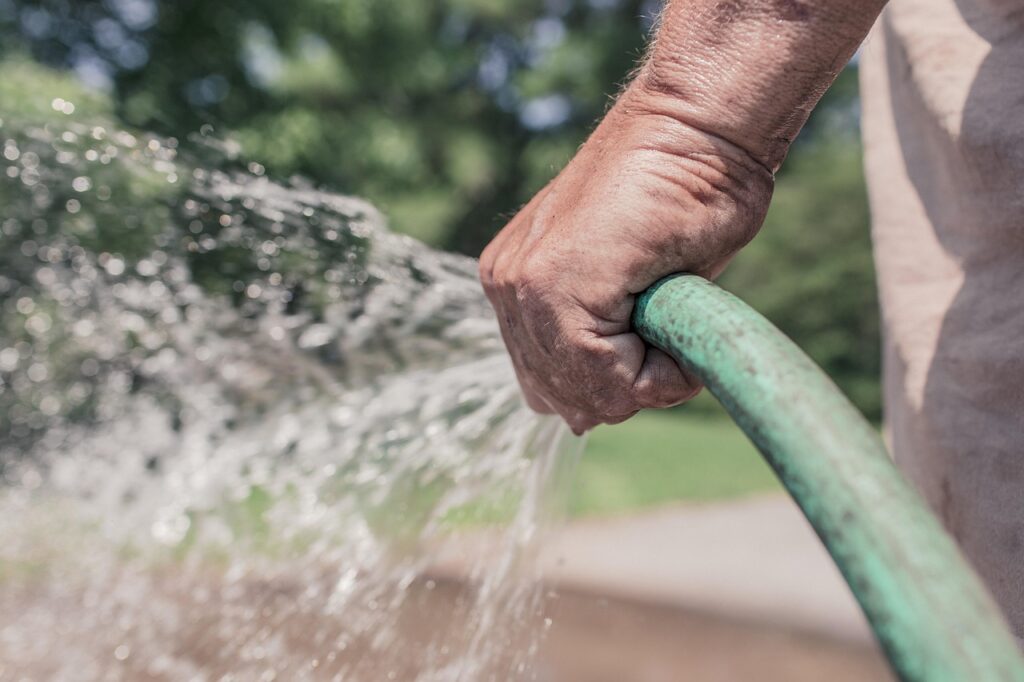
Gardening in May comes with a few classic Florida curveballs. The soil heats up and dries out fast, making it harder for seeds to germinate and young plants to get established. Pests like aphids, stink bugs, and caterpillars show up almost overnight, and fungal diseases aren’t far behind once the rains finally start.
It’s a month that rewards quick action, smart plant choices, heavy mulch, and a willingness to water early in the morning before the sun starts boiling everything alive.
Survive May, and you’re officially a Florida gardening veteran.
The real problem with planting May in Florida is that we get the summer heat and blistering sun without the summer rain and it’s lovely cloud cover.
What You CAN Plant in May (even in Florida)
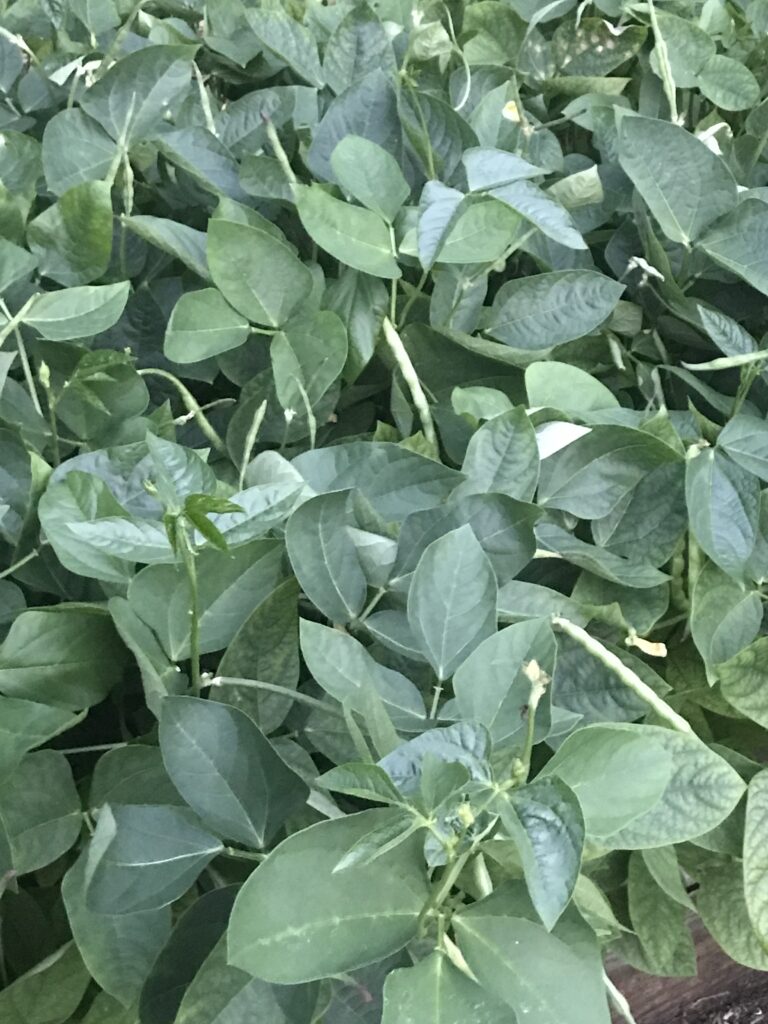
It’s not too late to look for abundance from your home garden – if you plan ahead, develop some patience, and don’t mind getting up early (or staying out late) to water.
Beans, Peas, and More
If you’re serious about growing your own food to cut grocery costs, beans and peas should be at the top of your May planting list. Not only are they some of the easiest crops to grow in Florida’s brutal summer heat, but they’re also packed with protein, fiber, iron, and key nutrients that your pantry—and your budget—will thank you for later.
Over the last year, the cost of protein ingredients — eggs, meat, and fish — saw the highest increase in the Tampa Bay area at 7.8% up from spring 2024.
Shelling peas and dried beans go a long way in delivering protein and fiber during tough financial times.
Southern Peas
Southern peas, including black-eyed peas, cowpeas, and crowder peas, are true Southern staples for a reason. These peas can thrive where other crops fail, fixing nitrogen in the soil and producing reliable harvests even in sandy or dry conditions.
They are an incredible source of affordable, homegrown protein, with one cup of cooked black-eyed peas delivering about 13 grams of protein and 11 grams of fiber. Some great heat-tolerant varieties include ‘Mississippi Silver’ (crowder type), ‘California Blackeye No. 5’ (classic black-eyed pea), and ‘Red Ripper’ (an old heirloom cowpea known for its vigorous growth). Once dried, Southern peas can last up to 2–3 years in airtight storage.
Pigeon Peas
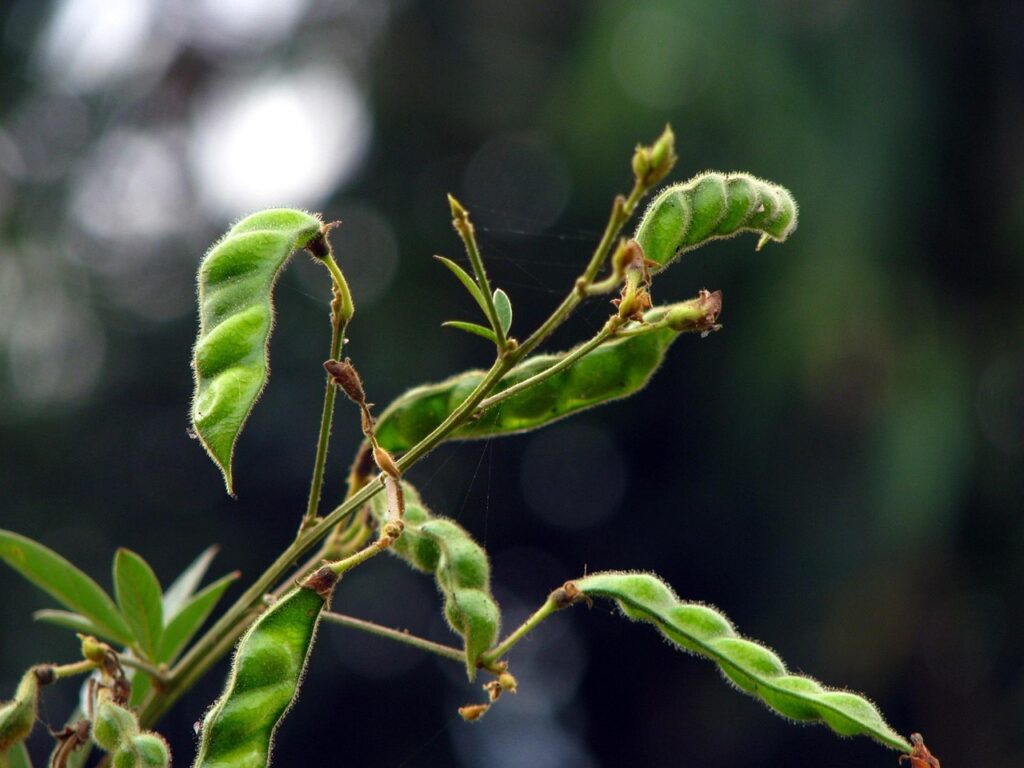
Pigeon peas are another powerhouse plant worth your garden space if you’re growing food for resilience. Originally from Africa and India, pigeon peas are a small shrub that can live for several seasons in frost-free areas of Florida.
They’re drought-resistant and pest-resistant. Even better — they pump nitrogen back into depleted soils, making them a natural fit for Florida’s sandy soil conditions.
The fresh peas are delicious in curries, stews, and rice dishes (think Caribbean “peas and rice”). Dried pigeon peas are a survival food loaded with fiber, potassium, and protein. Plus, once established, pigeon pea plants can produce for up to 3–5 years with minimal care.
While pigeon peas might not deliver a harvest until next January, plant them now for years of delicious nutty flavored beans. You’ll also get months of blooms that produce an intoxicating frangrance and feed the bees during the flower-sparse winter.
Tropical Staples to Plant in May
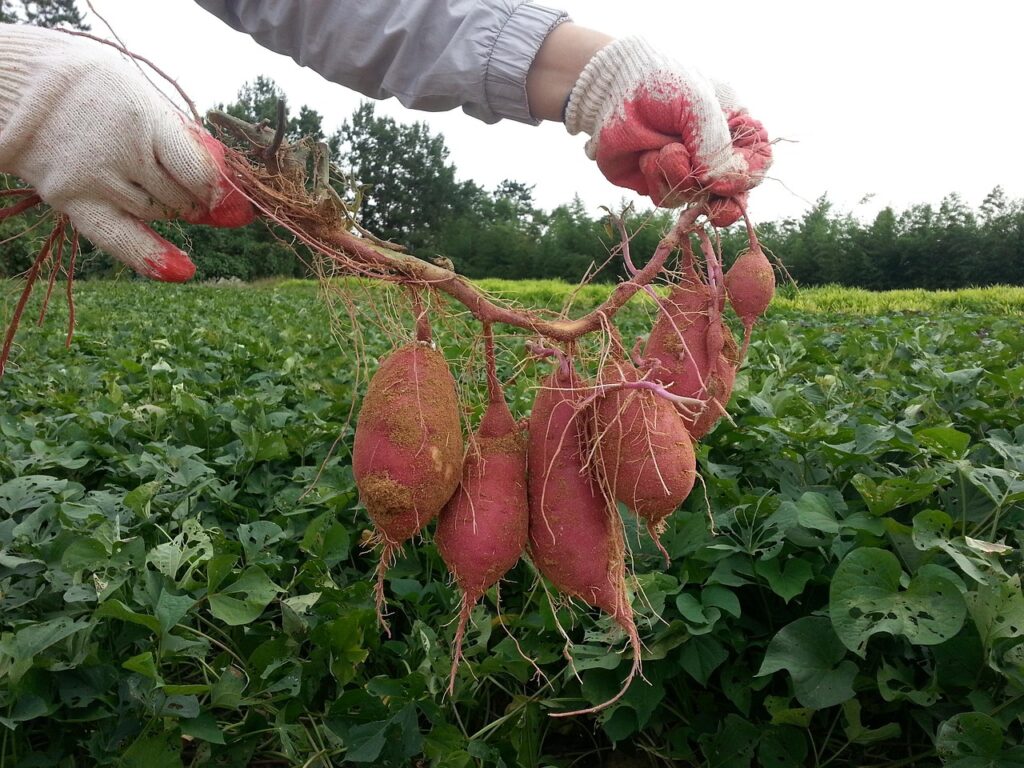
When Florida’s summer heat kicks into high gear, most traditional crops wave the white flag. But tropical staples like sweet potatoes, boniato, malanga, ginger, and turmeric actually thrive when the sun gets punishing.
These plants aren’t just tough — they’re nutrient-dense, calorie-rich, and ideal for anyone serious about growing their own food to save money.
Sweet Potatoes
Sweet potatoes are a classic Florida summer crop, and May is prime time for planting slips. They’re also a dual-purpose food: you can harvest the leaves for nutritious greens all summer, and dig up the starchy roots in the fall.
A medium sweet potato packs about 26 grams of complex carbs, along with beta-carotene, potassium, and fiber. They store incredibly well, lasting up to a year in cool, dry conditions. It’s hard to find a cool, dry place anywhere in Florida, but you can always freeze them for later after blanching or boiling them.
Boniato
Boniato, sometimes called Cuban sweet potato, is a white-fleshed cousin of the common sweet potato, but with a lighter, fluffier texture and a flavor somewhere between a potato and a chestnut.
It loves the Florida heat and poor soils and needs very little water once established. Boniato is a staple in Caribbean and Latin American cooking, especially for roasting, mashing, and making hearty stews.
Malanga
Malanga (Xanthosoma spp.) is another incredible staple crop for South and Central Florida gardeners. It’s a starchy root similar to taro. Malanga is rich in fiber and potassium and highly digestible, making it an important food source for people with dietary sensitivities.
Malanga can be boiled, mashed, fried like chips, or added to soups and stews as a thickener. Once harvested, the corms can last several weeks or even months when kept dry and cool.
Ginger / Turmeric
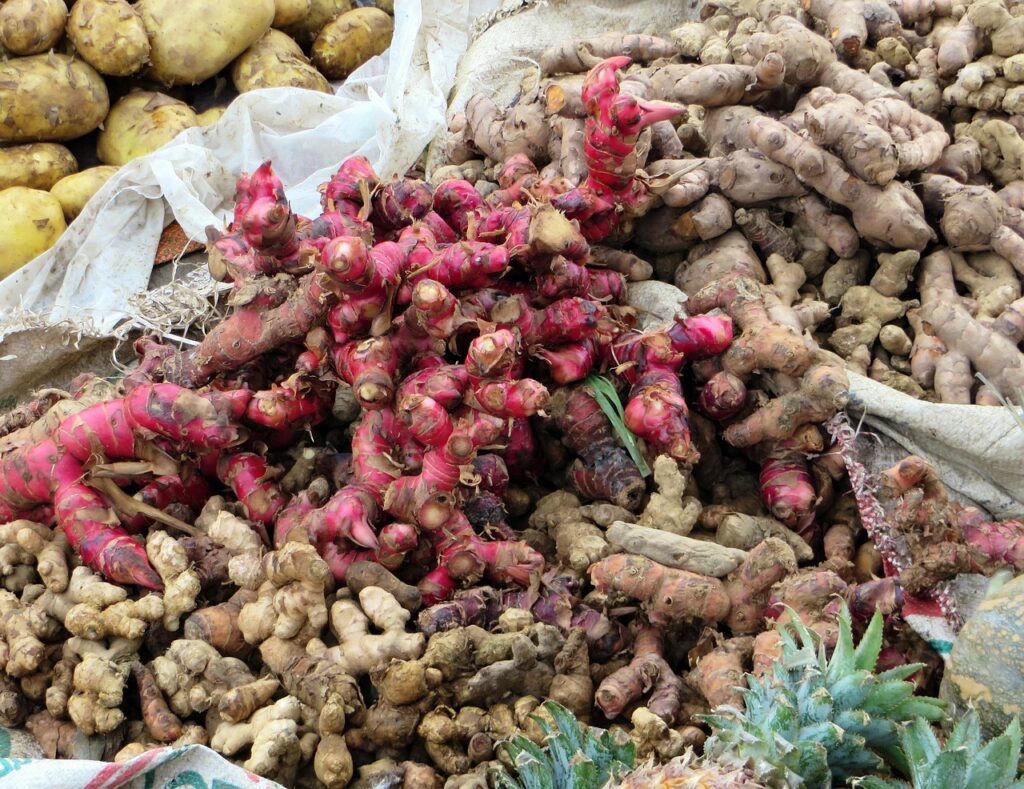
Ginger and turmeric are tropical rhizomes that love Florida’s muggy summers. They’re slow growers but extremely rewarding: a few seed pieces planted in May can yield a surprising harvest by late fall.
Fresh ginger and turmeric are high-value crops — prices at the store can easily top $5–10 per pound. Plus experts have been lauding their health benefits and medicianl uses for decades — so there’s another way they can help you stretch your buying power.
Growing your own gives you access to anti-inflammatory, antioxidant-rich roots at a fraction of the cost. Both can be frozen, dehydrated, or turned into powders for long-term storage, making them highly useful in both cooking and natural remedies.
Vegetables and Fruits to Plant in May in Florida

May can be a good time to plant fruits like cantaloupes, honeydews, and watermelons. You can also still plant a few vegetables, like winter squashes, Armenian and Asian cucumbers, and certain tomato varieties. However, growing them in Florida’s heat takes a bit of finesse.
Melons
Cantaloupes and Honeydews thrive in Florida’s heat, but they need some shade to avoid sunburn, especially during the peak afternoon heat. Trellising can help keep them off the soil and reduce the risk of fungal disease and pest infestation. These fruits need consistent moisture, but since Florida’s soil drains quickly, mulch is your friend. It helps retain moisture and keep the roots cool.
Watermelon
Watermelons love the heat, but they’re also prone to pests and disease. Trellising can help save space, and keeping the vines off the ground also reduces pest problems. As with melons, regular, light watering is key — but avoid soaking the leaves to prevent mildew.
Watermelon plants may also need shade during the hottest part of the day to reduce stress. My favorite variety is Sugar Baby, because they’re small enough to trellis and mature quickly before disease and pests can destroy them.
Winter Squash
Winter Squashes (or storage squashes) like Calabaza, Seminole pumpkin, and butternut squash can handle the heat, but watch out for pests like aphids and squash bugs. Mulching the soil helps keep moisture in and the fruits off the soil if they’re too large to trellis. Providing some shade, either with cloth or nearby taller plants, can help reduce sunburn and heat stress.
In Florida’s sandy, well-draining soil, make sure you’re watering regularly until the rainy season kicks in. Consider using drip irrigation or soaker hoses for more efficient water delivery. Shade during midday and consistent moisture will help your plants survive and thrive throughout the summer.
Yardlong Beans
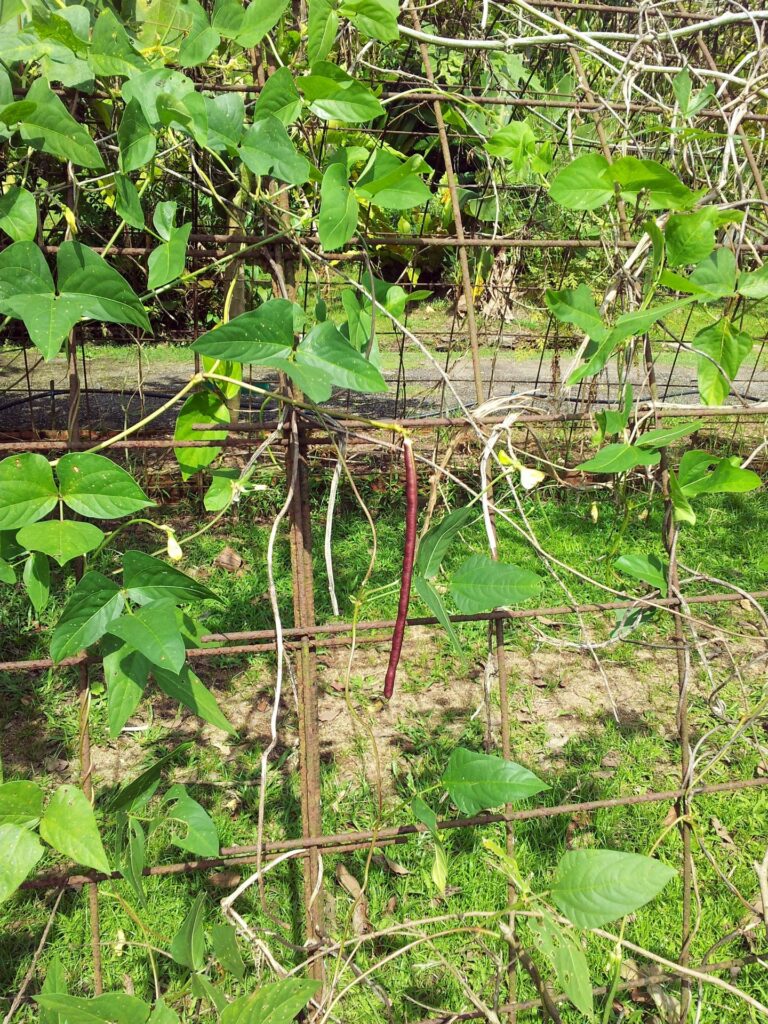
Sometimes called asparagus beans or Chinese long beans, yardlong beans thrive in Florida’s climate, even during a drought. Native to Southeast Asia, they love the heat and humidity and will start producing fast, often within just 60 days of planting.
The vines can grow 8 to 10 feet tall, so you’ll want to give them a sturdy trellis.
(Make good use of the shade they provide to protect more sun-senstive plants like peppers).
Each pod can grow over two feet long, but they’re best picked around 18 inches for tenderness. Yardlong beans have a mild, slightly nutty flavor and stay crisp even when cooked, making them perfect for quick stir-fries, light sautés, and even tempura. A few plants can keep a family in fresh beans all summer—and any extra pods can be blanched and frozen for later.
Yes, You CAN Plant Tomatoes in May in Florida
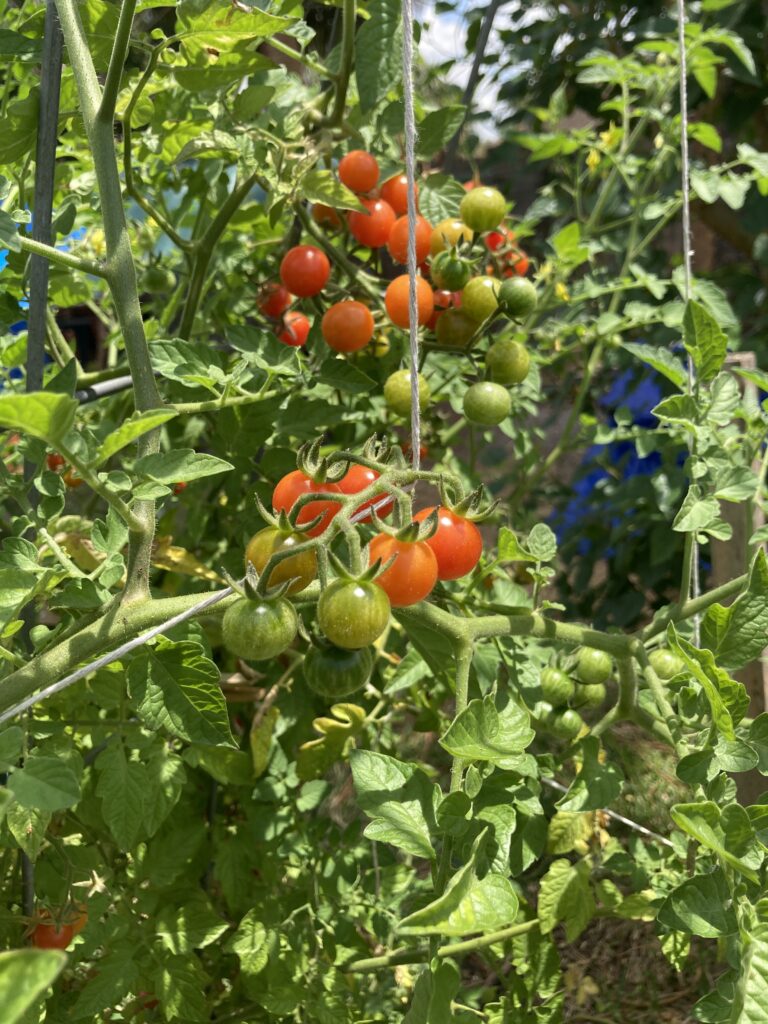
If you missed Florida’s prime tomato-growing months (usually September through April), there are still a few tried-and-true varieties that will survive our hot, humid climate.
Everglades
Everglades Tomatoes are a Florida favorite. These small, cherry-sized tomatoes are incredibly heat-tolerant and resistant to many of the common pests and diseases that can plague tomatoes in Florida.
They thrive in hot weather, making them perfect for planting in May. Their flavor is sweet and tangy, and they produce prolifically, so you can enjoy a steady harvest throughout the summer months.
So, even if you really wanted tomatoes for making sauce, a few extra Everglades tomato plants in your summer garden will provide. These intensely-flavored gems make excellent sauces. Investing in a food mill to remove all the skins and seeds makes quick work of turning out a smooth tomato paste or BBQ sauce.
Sweeties is another excellent choice for Florida gardens. These small, round, red tomatoes are known for their exceptional sweetness. They’re perfect for snacking right off the vine or tossing in salads. Sweeties are also incredibly productive, and their compact growth makes them a good choice for small spaces or container gardening.
Gardener’s Delight is a reliable heirloom cherry tomato that grows well in Florida’s heat. These tomatoes have a rich, classic tomato flavor that’s both sweet and tangy, and they hold up well against disease and heat stress. Gardener’s Delight is a true workhorse in the garden, providing a steady crop even in less-than-ideal conditions.
Large Red Cherry Tomatoes are a also great option. These tomatoes are slightly bigger than traditional cherry tomatoes but still maintain the classic sweetness and firm texture that makes them so popular. They are great for fresh eating, making sauces, or adding to dishes like bruschetta. They are also known for being resistant to cracking and pests, which is important in Florida’s sometimes unpredictable weather.
Tomato Survival Hacks for Florida Summer Tomatoes
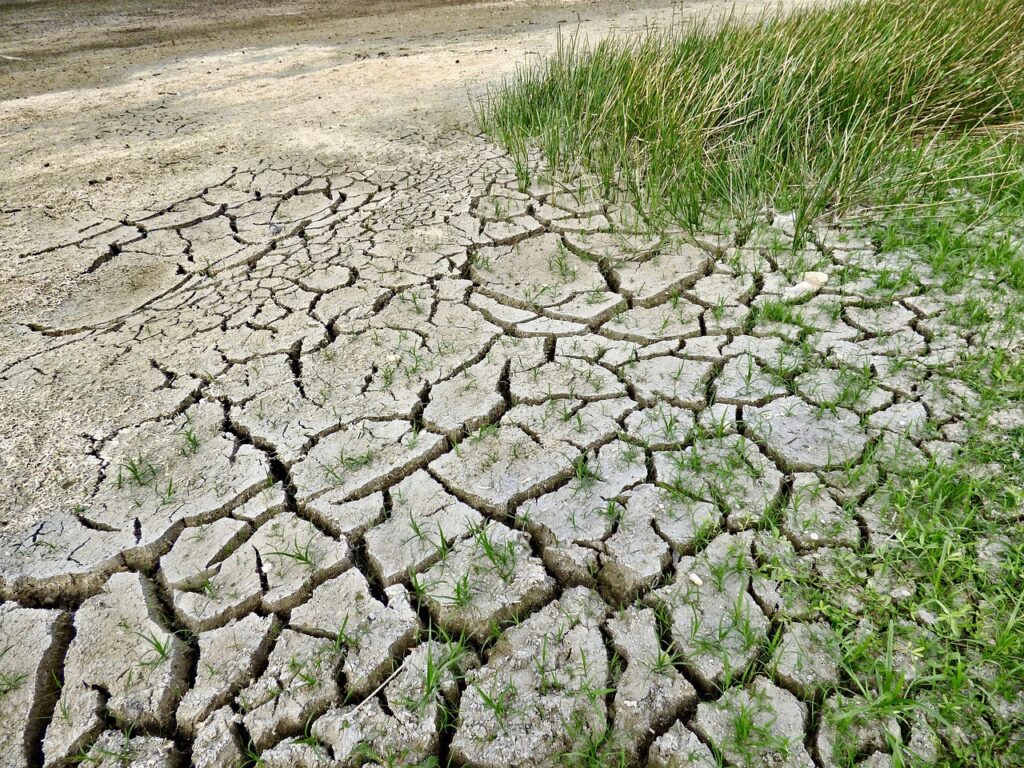
To ensure your heirloom tomatoes thrive, be sure to water consistently. But avoid overwatering — cherry tomatoes (especially Everglades) have notoriously thin skins that can split easily.
Mulching helps retain moisture and keeps the roots cool. Trellising your tomatoes keeps them off the ground, making them easier to harvest. It also makes it easier to spray the leaf-footed bugs that love to enjoy your tomatoes before you do. If possible, some afternoon shade helps keep them thriving, especially when temperatures peak in summer.
Last, but certainly not least, challenging temperatures across the country and adjustments to climate change have inspired many gardeners to experiment with shade cloth. I tried this last summer, and while I need to improve my setup structures, I was impressed enough with results to repeat the experiment.
Why Plant Cherry Tomatoes in May?
Cherry tomatoes keep producing through Florida’s heat because their tiny flowers set fruit reliably even when daytime temps soar above 90°F. Large slicer varieties, by contrast, need cooler nights (below 75°F) to germinate pollen. More often than not, regular tomato plants drop blooms when it’s too hot, so you end up with empty trusses instead of ripe fruit.
Smaller fruits also mean cherry plants can support dozens of tomatoes without needing huge amounts of water or nutrients all at once. Their steady, spread-out flowering means you’ll get bites of ripe fruit between heat waves, rather than betting everything on a single truss that might fail in a sudden heat spike. That’s why cherry and grape types are the smart choice for a Florida summer garden.
The Secret to Summer Gardening in Florida
If there is any wisdom I can pass on about what to plant in May in Florida, it is this: The faster a vegetable or fruit produces, the less exposure to heat, sun, spores, and insects it will have to endure.
While some vegetables will happily endure the harsh elements (sweet potatoes, cowpeas, okra, etc.), others are destined to live fast and die young (small melons, cucumbers, etc). This has proven true to me during every season in a wildly changeable climate.
Find the fastest maturing varieties you can for the best results.
Embracing the Slow Burn
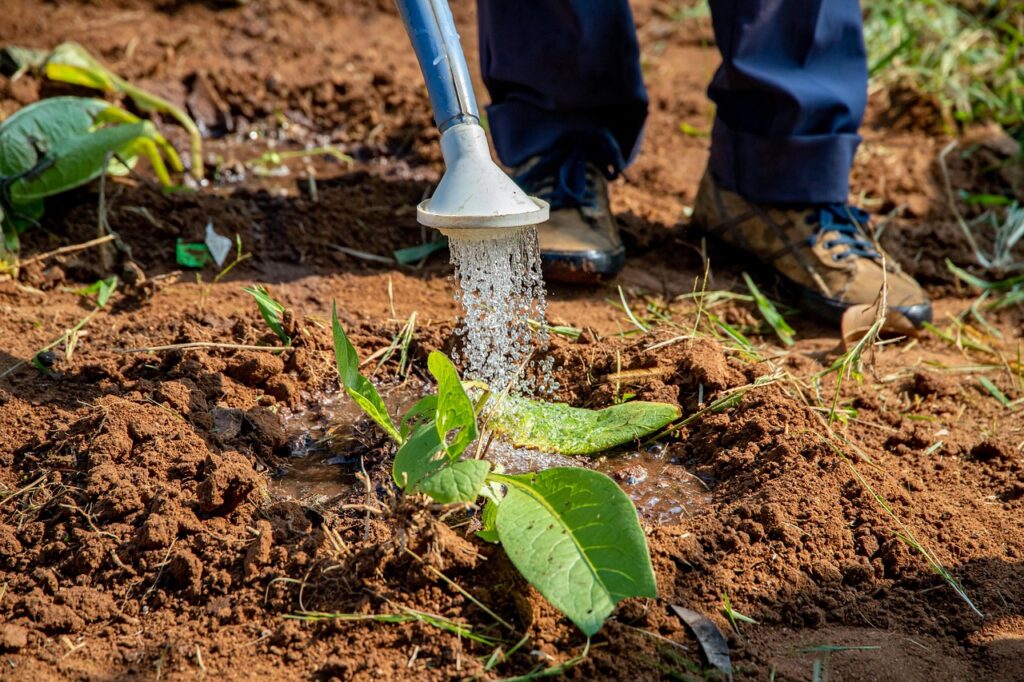
Now that you’ve planted your heat-hardy staples — pigeon peas, sweet potato and boniato slips, southern peas, cherry tomatoes, and more — it’s time to step back, stay cool, and let nature do its thing.
Get out of the sun, for pity’s sake!
These crops aren’t in a rush; many take the full summer to deliver a harvest. Use this hot, slow season to relax in the shade, sip cold drinks, and give your garden a light check-in now and then rather than daily toil in the blazing sun.
By the time temperatures start to dip in September, you’ll have a pantry full of nutritious pantry staples. You’ll also be rested and ready for fall — the real growing season in Florida.